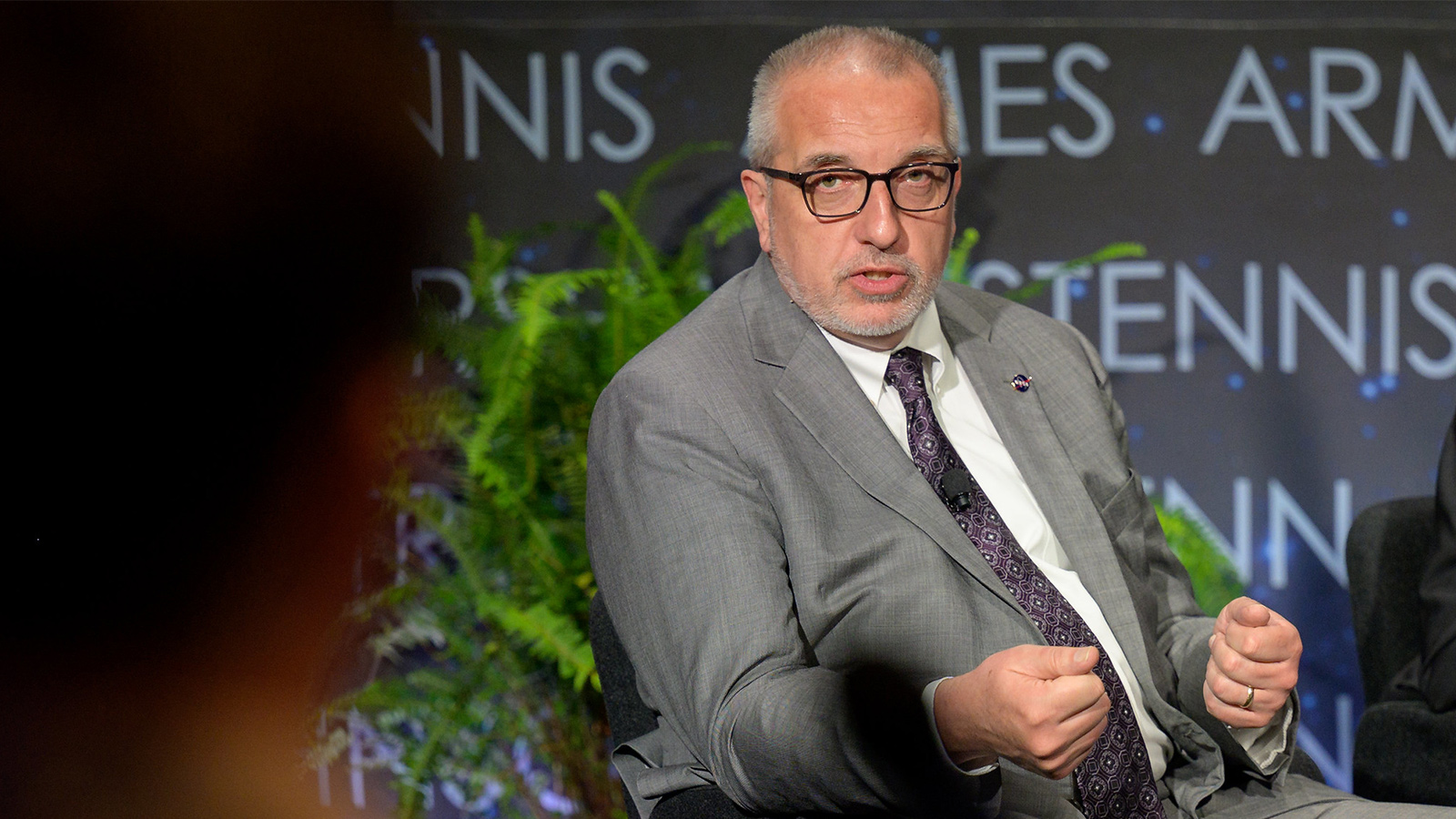Stay Up to Date
Submit your email address to receive the latest industry and Aerospace America news.
Widespread availability of alternative fuels is “the biggest lever” to reducing carbon dioxide emissions
For cleaner flight, NASA’s Aeronautics Research Mission Directorate has long viewed aerodynamic innovations, battery research and lighter materials as essential.
Those indeed remain “a really critical part of that equation” for achieving the air transport industry’s goal of slashing net carbon emissions to half of 2005 levels by 2050, NASA aeronautics chief Bob Pearce told me in a Zoom interview Wednesday during the AIAA Aviation virtual forum.
But he quickly turned our conversation to the topic of sustainable aviation fuels, which a host of companies are producing from feedstocks such as agricultural residue or even the emissions from steel mills, but not yet in great volume.
“If you can scale up their production of sustainable aviation fuels, you can have a big impact” on carbon dioxide emissions “in a relatively short period of time,” Pearce said.
SAFs are all but chemically identical to conventional jet fuels, which means when jet engines burn them they emit about the same amount of carbon. The net increase in atmospheric carbon is minimal, however, because SAFs are produced by recycling carbon that’s already above ground in one form or another. The CO2 absorbed from the air by plants, which are one kind of feedstock, offsets the CO2 expelled when the plant-derived SAF is burned, for instance.
The ASTM International standards body has approved a handful of SAFs to be blended up to 50/50 with traditional jet fuel. SAFs are certified as drop-in fuels, meaning there’s no modification required for the engines in today’s airliners, many of which could very well still be in service by 2050, Pearce said.
NASA doesn’t produce SAFs, but Pearce said the Aeronautics Research Mission Directorate he leads can play a supporting role by conducting tests with higher blends of SAFs, data which ASTM could consult to increase the 50/50 limit.
In parallel with those tests, ARMD is testing technologies for the next generation of airliners because “each gallon of that [SAF] fuel needs to be used as efficiently as possible,” Pearce said. The “four primary technology areas” NASA is focusing on are electric propulsion, smaller core gas turbines, new airframe designs and manufacturing with composite materials.
In a Tuesday panel on “NASA’s Sustainable Aviation Strategy,” other officials laid out the timelines for the four pillars, as they called them. The goal is to complete ground and flight testing on these technologies in the mid to late 2020s, so manufacturers could incorporate the findings when they’re building the next generation of airliners that would enter service in the 2030s.
“We’ll see what those timelines end up being,” Pearce said. “But I do think, as I said, the faster you want to get there, it really comes down to the availability of those sustainable aviation fuels.”
About cat hofacker
Cat helps guide our coverage and keeps production of the print magazine on schedule. She became associate editor in 2021 after two years as our staff reporter. Cat joined us in 2019 after covering the 2018 congressional midterm elections as an intern for USA Today.
Stay Up to Date
Submit your email address to receive the latest industry and Aerospace America news.




